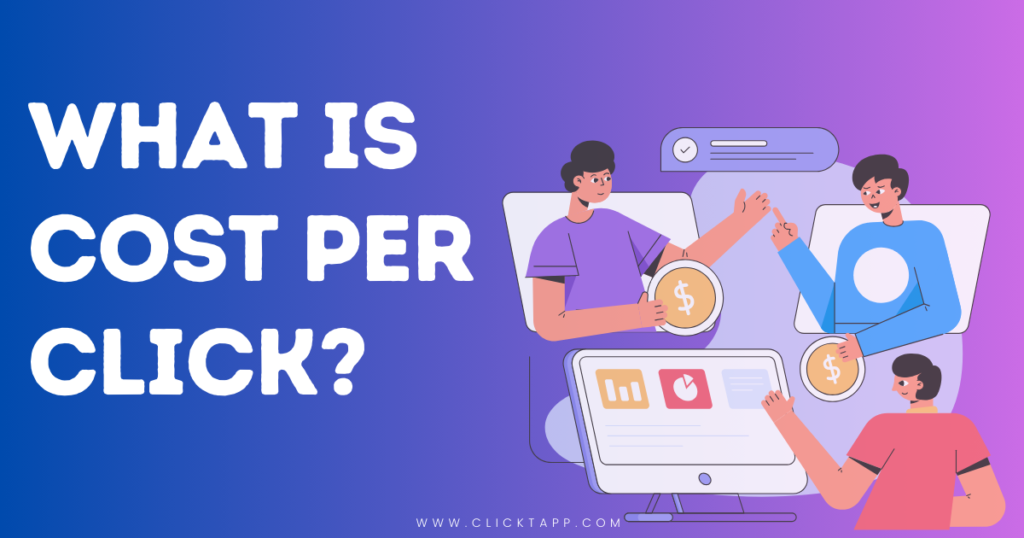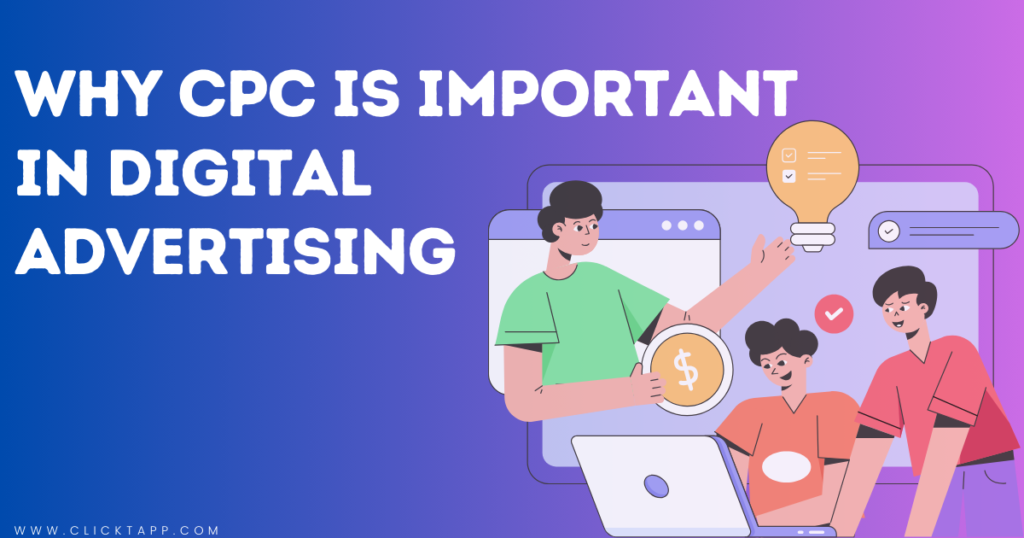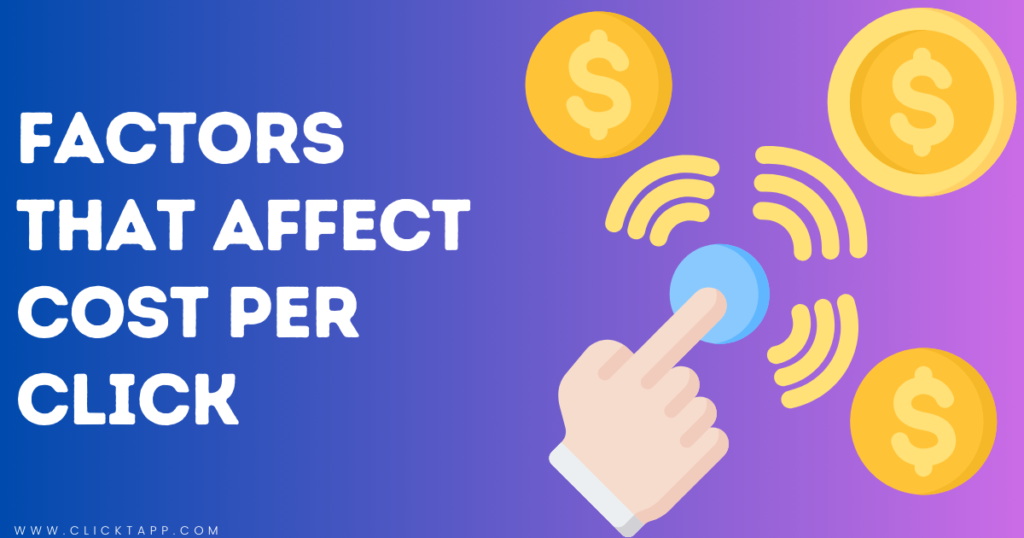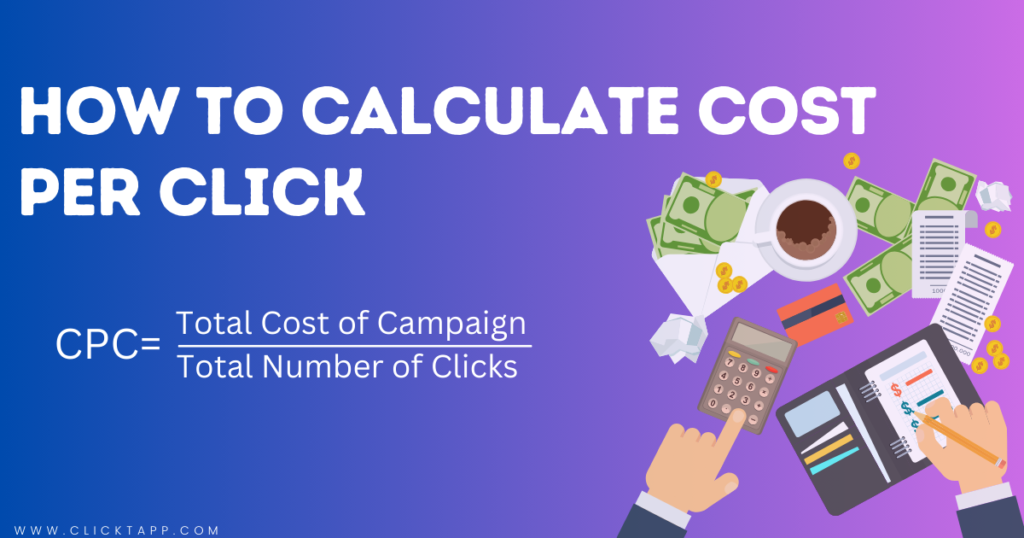In the fast-evolving world of digital marketing, Cost Per Click (CPC) is vital. It is a key part of any PPC campaign. CPC determines the cost an advertiser pays whenever someone clicks on their ad. Optimizing CPC can help businesses. It can maximize ROI, generate leads, and boost brand visibility.
1. Introduction to Cost Per Click (CPC)
What is CPC?

Cost Per Click (CPC) is a metric in PPC ads. It is the fee advertisers pay for each click on their ad. Users use it in Google Ads, Bing Ads, and social media ads on Facebook, Instagram, and LinkedIn.
How does CPC work?
Advertisers place bids in auctions for ad spots. The price varies based on how competitive the keywords are, the quality of the ads, and more. When users search for specific terms, the top ads come from those who bid the most. Ads appear at the top of search results or on related sites. Advertisers pay for each click on their ads.
2. Why CPC Is Important in Digital Advertising

2.1 Efficient Budget Management
CPC lets advertisers take charge of their budgets. It stands out from other models, like CPM (cost per thousand impressions) You only pay when a user clicks on your ad.
2.2 Quality Traffic Generation
With CPC, advertisers aim to get the right traffic to their websites. Since you pay for clicks, those who click your ad are likely interested in your product.
2.3 Measuring ROI Effectively
CPC is measurable. Businesses can track their campaign ROI. They look at their click costs and the earnings from conversions. This offers clear insights and helps them improve their ad strategies.
3. Factors That Affect CPC

3.1 Keyword Competition
The competitiveness of a keyword impacts its CPC. Keywords in key sectors, such as finance and legal services, often come with a higher price. They also have higher cost-per-click rates.
3.2 Quality Score (for Google Ads)
Google Ads uses a Quality Score. It rates your ad and landing page’s relevance to the searched keyword. Higher Quality Scores result in lower CPCs.
3.3 Ad Placement
The position of your ad affects CPC. Top positions are more visible, so they cost more. But they attract more clicks.
3.4 Audience Targeting
More refined audience targeting (e.g., by demographics or interests) can raise CPC. It’s tough and expensive to reach a highly relevant audience.
3.5 Bidding Strategy
Your CPC also depends on the bidding strategy you adopt. Manual bidding allows for greater control. Automated strategies, like targeting CPA and Maximize Clicks, optimize for conversions or volume. They affect the final CPC.
4. How to Calculate CPC

Formula for CPC
The formula for calculating CPC is simple:
CPC = Total Cost of Campaign ÷ Total Number of Clicks
For example, if you spent $500 on a campaign and received 250 clicks, your CPC would be $2.00.
Understanding Average CPC
The average CPC across various industries can differ significantly. Some industries, like legal services and insurance, can have CPCs over $50 per click. Others, like consumer goods, may only cost a few cents.
5. Strategies for Lowering Your CPC
5.1 Improve Your Quality Score
Improving your Quality Score on Google Ads is one of the most effective ways to reduce your CPC. Your ads must be relevant and keywords should match your ad copy. Your landing page must provide a good user experience.
5.2 Focus on Long-Tail Keywords
Long-tail keywords tend to have less competition and therefore lower CPCs. Instead of bidding on broad, high-competition keywords, target specific, intent-driven phrases. They can bring in quality traffic at a lower cost.
5.3 Optimize Your Ad Copy
Craft compelling ad copy that grabs attention and increases click-through rates (CTR). Ads that perform well often get favored in auctions, which lowers CPC.
5.4 Refine Audience Targeting
Focusing on high-intent audiences can reduce wasted clicks. It will make your CPC campaigns more efficient. Use data to target specific demographics, interests, or behaviors.
5.5 Use Negative Keywords
Negative keywords prevent your ads from showing on irrelevant searches. For example, if you sell premium software, use “free” as a negative keyword. This will avoid clicks from users seeking free solutions.
5.6 Check and Adjust Bids
Regularly check your campaigns. Adjust bids for any ads or keywords that are underperforming. Pausing ads with high CPCs and low conversions can help the campaign.
6. Using Data and Analytics to Optimize CPC
6.1 Use Google Analytics and Google Ads
Linking Google Analytics with Google Ads lets you track users after they click. Use this data to optimize your landing pages. It will raise conversion rates and reduce your CPC over time.
6.2 Conduct A/B Testing
A/B testing your ads helps find what your audience likes. Test your copy, creatives, and landing pages. Continuous testing enables you to maximize CTR and cut CPC.
6.3 Analyze Competitors’ CPC Strategies
Use SEMrush, Ahrefs, and SpyFu. They can analyze competitors’ keywords, CPC bids, and ad copy. Knowing how competitors bid can help you optimize your campaigns.
7. Advanced CPC Optimization Techniques

7.1 Dynamic Keyword Insertion
Match user searches with Dynamic Keyword Insertion. This tool tailors your ad copy to fit their needs. This strategy keeps ads relevant and engages users for every query. It often raises CTR and can cut CPC since the ads fit what searchers are looking for.
7.2 Install Retargeting
Retargeting campaigns focus on users who have already visited your website. These users are more likely to make a purchase. This can lead to lower CPCs and a higher return on ad spend (ROAS).
7.3 Use Geo-Targeting
For local businesses or services, geo-targeting can be an efficient way to reduce CPC. Focusing on a specific area cuts irrelevant clicks from outside it.
7.4 Leverage Automation
Automated bidding strategies, like Target CPA or Target ROAS, can help. They can optimize CPC. These algorithms use machine learning to adjust bids in real-time. This may lower costs and boost conversions.
8. Common CPC Mistakes to Avoid
8.1 Ignoring Ad Relevance
Failing to align your ad with the search intent can lead to high CPCs and wasted clicks. Always ensure your ad is relevant to the user’s query and provides a clear path to conversion.
8.2 Overbidding for High-CPC Keywords
Bidding too high on competitive keywords can quickly drain your budget. You must check their profitability first. Always balance the potential ROI with the CPC you’re willing to pay.
8.3 Poor Landing Page Experience
A poor landing page experience can hurt your campaign’s performance even if you win clicks. Ensure fast load times, mobile-friendliness, and a clear call to action. This will boost conversions.
9. Conclusion: The Future of CPC Advertising
CPC advertising always evolves due to new tech, trends, and platforms. As competition grows, businesses need to adapt. They must use smart, data-driven strategies. This will lower CPC and keep high conversion rates. Advertisers must make ads relevant and focus on audience intent to succeed in a tough market. They should also use advanced tools.
As digital ads evolve, success will always be a balance. It is between the cost of CPC and the value of each click. With the right approach, CPC campaigns can excel. They won’t break the bank.
FAQs: Cost Per Click (CPC)
What is CPC in digital marketing?
CPC (Cost Per Click) is an online ad pricing model. Advertisers pay a fee for each click on their ad. It is widely used in PPC ads on Google and Facebook.
How is CPC calculated?
CPC is calculated by dividing the total cost of a campaign by the number of clicks generated. The formula is:
CPC = Total Cost ÷ Total Clicks
What is a good CPC?
A good CPC depends on your industry, target audience, and campaign objectives. In some industries, a CPC below $1 is excellent. In others, like legal services and insurance, CPCs of $50 or more are common.
How can I reduce my CPC?
To cut CPC, focus on improving your ad’s Quality Score. Use long-tail keywords. Refine your audience targeting. Optimize your ad copy to raise click-through rates.
What is the difference between CPC and CPM?
CPC (Cost Per Click) means you pay for each click on your ad. CPM (Cost Per Thousand Impressions) means you pay for every thousand ad views, regardless of clicks.
Why is my CPC so high?
High CPC can stem from several factors. They include high keyword competition, a low Quality Score, and poor ad relevance. Or, they target a very specific audience. To lower CPC, adjust your bid strategy. Improve ad relevance and landing pages.
What is a Quality Score in Google Ads, and how does it affect CPC?
Quality Score is a metric that measures the relevance and quality of your ads and landing pages. A higher Quality Score leads to lower CPCs. Google rewards well-performing ads with better placement and lower costs.
What are long-tail keywords, and how do they impact CPC?
Long-tail keywords are specific, low-competition search terms. They have three or more words. Targeting long-tail keywords can help lower CPC. They have less competition and a higher user intent.
How often should I adjust my CPC bids?
CPC bids should be monitored and adjusted regularly based on performance data. Regular adjustments ensure we optimize low-performing keywords and high-CPC ads.
Can I automate CPC bidding?
Yes, most ad platforms offer automated bidding strategies. These include target CPA (Cost Per Acquisition) and target ROAS (Return on Ad Spend). These strategies use algorithms to adjust bids in real-time. They do this based on campaign goals to optimize CPC.

